- Home
- Isaac Asimov
Misbegotten Missionary Page 2
Misbegotten Missionary Read online
Page 2
There had been only the little patches of green fur (how often had he used that phrase in his speaking and thinking!) which seemed strange. No living individual on the planet had eyes. Instead, there was this fur. Even the plants, each blade or leaf or blossom, possessed the two patches of richer green.
Then Saybrook had noticed, startled and bewildered, that there was no conflict for food on the planet. All plants grew pulpy appendages which were eaten by the animals. These were regrown in a matter of hours. No other parts of the plants were touched. It was as though the plants fed the animals as part of the order of nature. And the plants themselves did not grow in overpowering profusion. They might almost have been cultivated, they were spread across the available soil so discriminately.
How much time, Weiss wondered, had Saybrook had to observe the strange law and order on the planet?—the fact that insects kept their numbers reasonable, though no birds ate them; that the rodentlike things did not swarm, though no carnivores existed to keep them in check.
*
And then there had come the incident of the white rats.
That prodded Weiss. He said, “Oh, one correction, Drake. Hamsters were not the first animals involved. It was the white rats.”
“White rats,” said Drake, making the correction in his notes.
“Every colonizing ship,” said Weiss, “takes a group of white rats for the purpose of testing any alien foods. Rats, of course, are very similar to human beings from a nutritional viewpoint. Naturally, only female white rats are taken.”
Naturally. If only one sex was present, there was no danger of unchecked multiplication in case the planet proved favorable. Remember the rabbits in Australia.
“Incidentally, why not use males?” asked Drake.
“Females are hardier,” said Weiss, “which is lucky, since that gave the situation away. It turned out suddenly that all the rats were bearing young.”
“Right. Now that’s where I’m up to, so here’s my chance to get some things straight. For my own information, Doc, how did Saybrook find out they were in a family way?”
“Accidentally, of course. In the course of nutritional investigations, rats are dissected for evidence of internal damage. Their condition was bound to be discovered. A few more were dissected; same results. Eventually, all that lived gave birth to young—with no male rats aboard!”
“And the point is that all the young were born with little green patches of fur instead of eyes.”
“That is correct. Saybrook said so and we corroborate him. After the rats, the pet cat of one of the children was obviously affected. When it finally kittened, the kittens were not born with closed eyes but with little patches of green fur. There was no tomcat aboard.
“Eventually Saybrook had the women tested. He didn’t tell them what for. He didn’t want to frighten them. Every single one of them was in the early stages of pregnancy, leaving out of consideration those few who had been pregnant at the time of embarkation. Saybrook never waited for any child to be born, of course. He knew they would have no eyes, only shining patches of green fur.
“He even prepared bacterial cultures (Saybrook was a thorough man) and found each bacillus to show microscopic green spots.”
Drake was eager. “That goes way beyond our briefing—or, at least, the briefing I got. But granted that life on Saybrook’s Planet is organized into a unified whole, how is it done?”
“How? How are your cells organized into a unified whole? Take an individual cell out of your body, even a brain cell, and what is it by itself? Nothing. A little blob of protoplasm with no more capacity for anything human than an amoeba. Less capacity, in fact, since it couldn’t live by itself. But put the cells together and you have something that could invent a spaceship or write a symphony.”
“I get the idea,” said Drake.
Weiss went on, “All life on Saybrook’s Planet is a single organism. In a sense, all life on Earth is too, but it’s a fighting dependence, a dog-eat-dog dependence. The bacteria fix nitrogen; the plants fix carbon; animals eat plants and each other; bacterial decay hits everything. It comes full circle. Each grabs as much as it can, and is, in turn, grabbed.
“On Saybrook’s Planet, each organism has its place, as each cell in our body does. Bacteria and plants produce food, on the excess of which animals feed, providing in turn carbon dioxide and nitrogenous wastes. Nothing is produced more or less than is needed. The scheme of life is intelligently altered to suit the local environment. No group of life forms multiplies more or less than is needed, just as the cells in our body stop multiplying when there are enough of them for a given purpose. When they don’t stop multiplying, we call it cancer. And that’s what life on Earth really is, the kind of organic organization we have, compared to that on Saybrook’s Planet. One big cancer. Every species, every individual doing its best to thrive at the expense of every other species and individual.”
“You sound as if you approve of Saybrook’s Planet, Doc.”
“I do, in a way. It makes sense out of the business of living. I can see their viewpoint toward us. Suppose one of the cells of your body could be conscious of the efficiency of the human body as compared with that of the cell itself, and could realize that this was only the result of the union of many cells into a higher whole. And then suppose it became conscious of the existence of free-living cells, with bare life and nothing more. It might feel a very strong desire to drag the poor thing into an organization. It might feel sorry for it, feel perhaps a sort of missionary spirit. The things on Saybrook’s Planet—or the thing; one should use the singular—feels just that, perhaps.”
“And went ahead by bringing about virgin births, eh, Doc? I’ve got to go easy on that angle of it. Post-office regulations, you know.”
“There’s nothing ribald about it, Drake. For centuries we’ve been able to make the eggs of sea urchins, bees, frogs, et cetera develop without the intervention of male fertilization. The touch of a needle was sometimes enough, or just immersion in the proper salt solution. The thing on Saybrook’s Planet can cause fertilization by the controlled use of radiant energy. That’s why an appropriate energy barrier stops it; interference, you see, or static.
“They can do more than stimulate the division and development of an unfertilized egg. They can impress their own characteristics upon its nucleoproteins, so that the young are born with the little patches of green fur, which serve as the planet’s sense organ and means of communication. The young, in other words, are not individuals, but become part of the thing on Saybrook’s Planet. The thing on the planet, not at all incidentally, can impregnate any species—plant, animal, or microscopic.”
“Potent stuff,” muttered Drake.
“Totipotent,” Dr. Weiss said sharply. “Universally potent. Any fragment of it is totipotent. Given time, a single bacterium from Saybrook’s Planet can convert all of Earth into a single organism! We’ve got the experimental proof of that.”
Drake said unexpectedly, “You know, I think I’m a millionaire, Doc. Can you keep a secret?”
Weiss nodded, puzzled.
“I’ve got a souvenir from Saybrook’s Planet,” Drake told him, grinning. “It’s only a pebble, but after the publicity the planet will get, combined with the fact that it’s quarantined from here on in, the pebble will be all any human being will ever see of it. How much do you suppose I could sell the thing for?”
Weiss stared. “A pebble?” He snatched at the object shown him, a hard, gray ovoid. “You shouldn’t have done that, Drake. It was strictly against regulations.”
“I know. That’s why I asked if you could keep a secret. If you could give me a signed note of authentication—What’s the matter, Doc?”
Instead of answering, Weiss could only chatter and point. Drake ran over and stared down at the pebble. It was the same as before—
Except that the light was catching it at an angle, and it showed up two little green spots. Look very closely; they were patches of green hairs.
/>
He was disturbed. There was a definite air of danger within the ship. There was the suspicion of his presence aboard. How could that be? He had done nothing yet. Had another fragment of home come aboard and been less cautious? That would be impossible without his knowledge, and though he probed the ship intensely, he found nothing.
And then the suspicion diminished, but it was not quite dead. One of the keen-thinkers still wondered, and was treading close to the truth.
How long before the landing? Would an entire world of life fragments be deprived of completeness? He clung closer to the severed ends of the wire he had been specially bred to imitate, afraid of detection, fearful for his altruistic mission.
*
Dr. Weiss had locked himself in his own room. They were already within the solar system, and in three hours they would be landing. He had to think. He had three hours in which to decide.
Drake’s devilish “pebble” had been part of the organized life on Saybrook’s Planet, of course, but it was dead. It was dead when he had first seen it, and if it hadn’t been, it was certainly dead after they fed it into the hyper-atomic motor and converted it into a blast of pure heat. And the bacterial cultures still showed normal when Weiss anxiously checked.
That was not what bothered Weiss now.
Drake had picked up the “pebble” during the last hours of the stay on Saybrook’s Planet—after the barrier breakdown. What if the breakdown had been the result of a slow, relentless mental pressure on the part of the thing on the planet? What if parts of its being waited to invade as the barrier dropped? If the “pebble” had not been fast enough and had moved only after the barrier was reestablished, it would have been killed. It would have lain there for Drake to see and pick up.
It was a “pebble,” not a natural life form. But did that mean it was not some kind of life form? It might have been a deliberate production of the planet’s single organism—a creature deliberately designed to look like a pebble, harmless-seeming, unsuspicious. Camouflage, in other words—a shrewd and frighteningly successful camouflage.
Had any other camouflaged creature succeeded in crossing the barrier before it was reestablished—with a suitable shape filched from the minds of the humans aboard ship by the mind-reading organism of the planet? Would it have the casual appearance of a paperweight? Of an ornamental brass-head nail in the captain’s old-fashioned chair? And how would they locate it? Could they search every part of the ship for the telltale green patches— even down to individual microbes?
And why camouflage? Did it intend to remain undetected for a time? Why? So that it might wait for the landing on Earth?
An infection after landing could not be cured by blowing up a ship. The bacteria of Earth, the molds, yeasts, and protozoa, would go first. Within a year the non-human young would be arriving by the uncountable billions.
Weiss closed his eyes and told himself it might not be such a bad thing. There would be no more disease, since no bacterium would multiply at the expense of its host, but instead would be satisfied with its fair share of what was available. There would be no more overpopulation; the hordes of man-kind would decline to adjust themselves to the food supply. There would be no more wars, no crime, no greed.
But there would be no more individuality, either.
Humanity would find security by becoming a cog in a biological machine. A man would be brother to a germ, or to a liver cell.
He stood up. He would have a talk with Captain Loring. They would send their report and blow up the ship, just as Saybrook had done.
He sat down again. Saybrook had had proof, while he had only the conjectures of a terrorized mind, rattled by the sight of two green spots on a pebble. Could he kill the two hundred men on board ship because of a feeble suspicion?
He had to think!
He was straining. Why did he have to wait? If he could only welcome those who were aboard now. Now!
Yet a cooler, more reasoning part of himself told him that he could not. The little multipliers in the darkness would betray their new status in fifteen minutes, and the keen-thinkers had them under continual observation. Even one mile from the surface of their planet would be too soon, since they might still destroy themselves and their ship out in space.
Better to wait for the main air locks to open, for the planetary air to swirl in with millions of the little multipliers. Better to greet each one of them into the brotherhood of unified life and let them swirl out again to spread the message.
Then it would be done! Another world organized, complete!
He waited. There was the dull throbbing of the engines working mightily to control the slow dropping of the ship; the shudder of contact with planetary surface, then—
He let the jubilation of the keen-thinkers sweep into reception, and his own jubilant thoughts answered them. Soon they would be able to receive as well as himself. Perhaps not these particular fragments, but the fragments that would grow out of those which were fitted for the continuation of life.
The main air locks were about to be opened—
And all thought ceased.
*
Jerry Thorn thought, Damn it, something’s wrong now.
He said to Captain Loring, “Sorry. There seems to be a power break-down. The locks won’t open.”
“Are you sure, Thorn? The lights are on.”
“Yes, sir. We’re investigating it now.”
He tore away and joined Roger Oldenn at the air-lock wiring box. “What’s wrong?”
“Give me a chance, will you?” Oldenn’s hands were busy. Then he said, “For the love of Pete, there’s a six-inch break in the twenty-amp lead.”
“What? That can’t be!”
Oldenn held up the broken wires with their clean, sharp, sawn-through ends.
Dr. Weiss joined them. He looked haggard and there was the smell of brandy on his breath.
He said shakily, “What’s the matter?”
They told him. At the bottom of the compartment, in one corner, was the missing section.
Weiss bent over. There was a black fragment on the floor of the compartment. He touched it with his finger and it smeared, leaving a sooty smudge on his finger tip. He rubbed it off absently.
There might have been something taking the place of the missing section of wire. Something that had been alive and only looked like wire, yet something that would heat, die, and carbonize in a tiny fraction of a second once the electrical circuit which controlled the air lock had been closed.
He said, “How are the bacteria?”
A crew member went to check, returned and said, “All normal, Doc.”
The wires had meanwhile been spliced, the locks opened, and Dr. Weiss stepped out into the anarchic world of life that was Earth.
“Anarchy,” he said, laughing a little wildly. “And it will stay that way.”

 The Return of the Black Widowers
The Return of the Black Widowers The Stars, Like Dust
The Stars, Like Dust Foundation
Foundation David Starr Space Ranger
David Starr Space Ranger I, Robot
I, Robot Puzzles of the Black Widowers
Puzzles of the Black Widowers Casebook of the Black Widowers
Casebook of the Black Widowers The Ugly Little Boy
The Ugly Little Boy Azazel
Azazel Pebble in the Sky
Pebble in the Sky Foundation and Empire
Foundation and Empire The Complete Robot
The Complete Robot Fantastic Voyage
Fantastic Voyage Foundation and Earth
Foundation and Earth The Naked Sun
The Naked Sun The Currents of Space
The Currents of Space Foundation's Edge
Foundation's Edge The Robots of Dawn
The Robots of Dawn Nightfall
Nightfall The Caves of Steel
The Caves of Steel Prelude to Foundation
Prelude to Foundation Nemesis
Nemesis Robot Dreams
Robot Dreams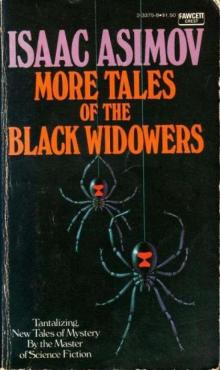 More Tales of the Black Widowers
More Tales of the Black Widowers The Complete Stories
The Complete Stories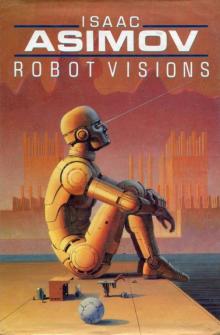 Robot Visions
Robot Visions Lucky Starr And The Moons of Jupiter
Lucky Starr And The Moons of Jupiter Lucky Starr and the Big Sun of Mercury
Lucky Starr and the Big Sun of Mercury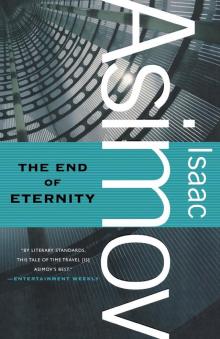 The End of Eternity
The End of Eternity The Bicentennial Man and Other Stories
The Bicentennial Man and Other Stories Lucky Starr And The Rings Of Saturn
Lucky Starr And The Rings Of Saturn Buy Jupiter and Other Stories
Buy Jupiter and Other Stories Forward the Foundation
Forward the Foundation Lucky Starr and the Oceans of Venus
Lucky Starr and the Oceans of Venus The Positronic Man
The Positronic Man The Portable Star
The Portable Star Asimovs Mysteries
Asimovs Mysteries Earth Is Room Enough
Earth Is Room Enough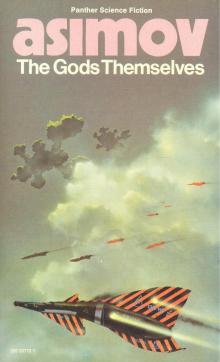 The Gods Themselves
The Gods Themselves Youth
Youth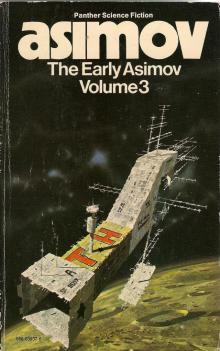 The Early Asimov Volume 3
The Early Asimov Volume 3 The Winds of Change and Other Stories
The Winds of Change and Other Stories Of Time, Space, and Other Things
Of Time, Space, and Other Things Nine Tomorrows
Nine Tomorrows Time Warps
Time Warps Robots and Empire
Robots and Empire Young Star Travelers
Young Star Travelers Fantastic Voyage II: Destination Brain
Fantastic Voyage II: Destination Brain Second Foundation
Second Foundation The Rest of the Robots
The Rest of the Robots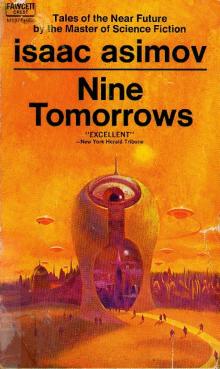 NINE TOMORROWS Tales of the Near Future
NINE TOMORROWS Tales of the Near Future Daneel Olivaw 1 - The Caves of Steel
Daneel Olivaw 1 - The Caves of Steel THE BICENTENNIAL MAN
THE BICENTENNIAL MAN David Starr Space Ranger (lucky starr)
David Starr Space Ranger (lucky starr)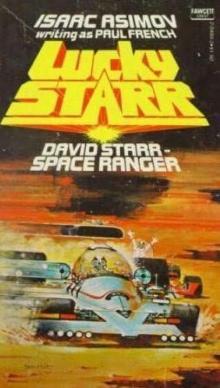 David Starr Space Ranger (ls)
David Starr Space Ranger (ls) Lucky Starr And The Big Sun Of Mercury ls-4
Lucky Starr And The Big Sun Of Mercury ls-4 Pebble In The Sky te-1
Pebble In The Sky te-1 Asimov’s Future History Volume 9
Asimov’s Future History Volume 9 Gold: The Final Science Fiction Collection
Gold: The Final Science Fiction Collection Foundation and Earth f-7
Foundation and Earth f-7 Asimov's New Guide to Science
Asimov's New Guide to Science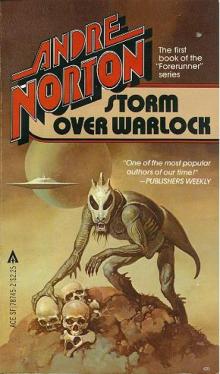 STORM OVER WARLOCK
STORM OVER WARLOCK Stars, Like Dust
Stars, Like Dust Norby The Mixed-Up Robot
Norby The Mixed-Up Robot Found!
Found! Asimov’s Future History Volume 11
Asimov’s Future History Volume 11 Second Foundation f-5
Second Foundation f-5 Asimov’s Future History Volume 15
Asimov’s Future History Volume 15 The Early Asimov. Volume 1
The Early Asimov. Volume 1 Secound Foundation
Secound Foundation Daneel Olivaw 3 - The Robots of Dawn
Daneel Olivaw 3 - The Robots of Dawn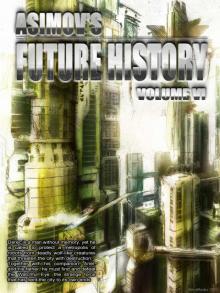 Asimov’s Future History Volume 6
Asimov’s Future History Volume 6 The Early Asimov. Volume 2
The Early Asimov. Volume 2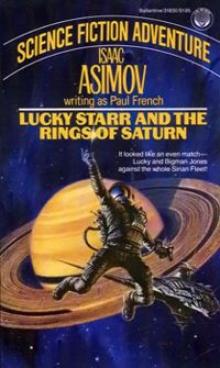 Lucky Starr And The Rings Of Saturn ls-6
Lucky Starr And The Rings Of Saturn ls-6 100 Malicious Little Mysteries
100 Malicious Little Mysteries Forward the Foundation f-2
Forward the Foundation f-2 I.Asimov: A Memoir
I.Asimov: A Memoir Foundation's Edge f-6
Foundation's Edge f-6 Lucky Starr and the Pirates of the Asteroids ls-2
Lucky Starr and the Pirates of the Asteroids ls-2 Robot City 1 & 2
Robot City 1 & 2 The Fourth Science Fiction Megapack
The Fourth Science Fiction Megapack Asimov’s Future History Volume 16
Asimov’s Future History Volume 16 The Dim Rumble
The Dim Rumble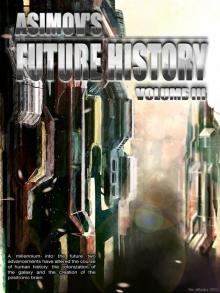 Asimov's Future History Volume 3
Asimov's Future History Volume 3 The Currents Of Space te-3
The Currents Of Space te-3 Asimov’s Guide To Shakespear. Volume 1
Asimov’s Guide To Shakespear. Volume 1 Asimov’s Future History Volume 13
Asimov’s Future History Volume 13 Asimov’s Future History Volume 12
Asimov’s Future History Volume 12 The Secret Sense
The Secret Sense Of Time and Space and Other Things
Of Time and Space and Other Things Norby tnc-2
Norby tnc-2 Norby The Mixed-Up Robot tnc-1
Norby The Mixed-Up Robot tnc-1 Misbegotten Missionary
Misbegotten Missionary Asimov’s Future History Volume 19
Asimov’s Future History Volume 19 Fantastic Voyage II: Destination Brain fv-2
Fantastic Voyage II: Destination Brain fv-2 Asimov’s Future History Volume 10
Asimov’s Future History Volume 10 Asimov's Future History Volume 2
Asimov's Future History Volume 2 Feeling of Power
Feeling of Power In the Beginning
In the Beginning The Caves of Steel trs-1
The Caves of Steel trs-1 Asimov's Future History Vol 2
Asimov's Future History Vol 2 Caliban c-1
Caliban c-1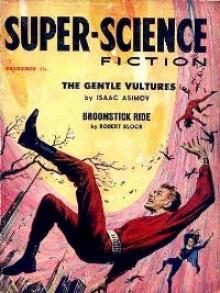 The Gentle Vultures
The Gentle Vultures Utopia c-3
Utopia c-3 Prelude to Foundation f-1
Prelude to Foundation f-1 Short Stories Vol.1
Short Stories Vol.1 Asimov’s Future History Volume 8
Asimov’s Future History Volume 8 Daneel Olivaw 4 - Robots and Empire
Daneel Olivaw 4 - Robots and Empire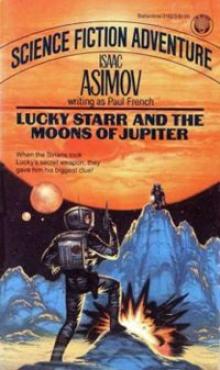 Lucky Starr The And The Moons of Jupiter ls-5
Lucky Starr The And The Moons of Jupiter ls-5 Gold
Gold Asimov’s Future History Volume 4
Asimov’s Future History Volume 4 Foundation and Empire f-4
Foundation and Empire f-4 Potential
Potential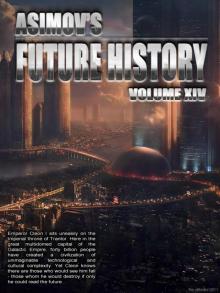 Asimov’s Future History Volume 14
Asimov’s Future History Volume 14 Asimov’s Future History Volume 7
Asimov’s Future History Volume 7 Daneel Olivaw 2 - The Naked Sun
Daneel Olivaw 2 - The Naked Sun Lucky Starr and the Pirates of the Asteroids
Lucky Starr and the Pirates of the Asteroids Foundation f-3
Foundation f-3 All the Troubles of the World
All the Troubles of the World Cleon the Emperor
Cleon the Emperor Asimov's Future History Volume 5
Asimov's Future History Volume 5 Asimov’s Future History Volume 20
Asimov’s Future History Volume 20 Robots and Empire trs-4
Robots and Empire trs-4 Profession
Profession It's Been a Good Life
It's Been a Good Life The Robots of Dawn trs-3
The Robots of Dawn trs-3 Lucky Starr And The Oceanf Of Venus ls-3
Lucky Starr And The Oceanf Of Venus ls-3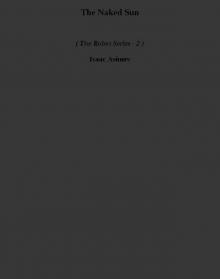 The Naked Sun trs-2
The Naked Sun trs-2 Asimov's Future History Volume 1
Asimov's Future History Volume 1